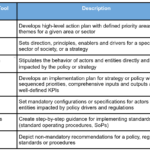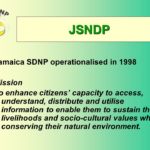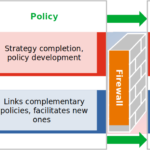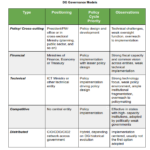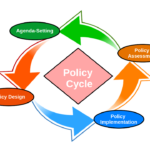Below is the concluding sections of a crowdsourcing paper we submitted to ICEGOV 2014 for possible publication later in the year.
4.4 Main Findings
All three examples studied above were undertaken by provincial and local governments where development gaps are usually more glaring. This indicates that in most cases it is probably better to start at such level and avoid a central government approach, except when trying to institutionalize participatory approaches at the national level.
While the approaches taken by local governments differ, political will by local authorities, combined with pressure from stakeholders in some cases, is a key entry point for any sort of crowdsourcing project. The case of Madagascar illustrates this point best as once political is withdrawn, it is difficult to have impact on policy and decision-making processes, no matter how large the volume of the contributions provided by stakeholders.
Two of our cases took place in Least Developed Countries (LDCs) where Internet and, less so, mobile penetration, is still incipient. This raises the issue on the role of new technologies for crowdsourcing and enhanced participation in policy-making processes. A combination of online, SMS and offline platforms or mechanisms is the best approach here to ensure full representation.
Related to this is the impact in terms of reach out and scale that technologies can have in these processes. From a quantitative viewpoint, using mobiles and SMS facilitates the inclusion of more people in decision-making processes, provided people want to participate. Qualitatively, the story is a bit different as the evidence that ICTs by default “improve” governance processes is not there yet, in spite of the examples provided above. More analytical research is needed here.
Related to the last point, there is need for more rigorous evaluation to verify the accuracy and content of the text messages and to ensure that the approach is immune to elite capture or exclusivity (Gigler and Bailur 2014).
All in all, the cases presented here suggest that developing country governments can already start to use crowdsourcing to include stakeholders in policy making but need to be strategic on how to do this effectively. This will require beefing up state capacity, local and national, while introducing governance and ICT innovations to build strong institutions, enhance democratic governance and prevent conflict, and foster human development.
5. Conclusion
This paper has made the case for the relevance of crowdsourcing in and by developing countries public institutions to foster development outcomes. It has proposed an analytical framework focused on stakeholder participation levels in public policy making, endorsing the view that new technologies play a key role as enablers – and not as a goal themselves. The ultimate goal of government interventions, directly or indirectly as in the case of Madagascar, is to enhance human development, and not just to use more crowdsourcing platforms per se or augment access to new technologies.
Our research has shown that, under certain conditions, crowdsourcing can be an effective platform to strengthen stakeholder-government interactions who – working together – can reach win-win situations that permeate all sectors of society while fostering inclusion and participation.
One key element which is usually ignored when discussing the potential of crowdsourcing relates to the institutionalization of participatory processes into existing decision making and governance mechanisms. A good example here is the Philippines’ Guingona Crowdsourcing Act, filed in 2013, which allows the public to contribute to the formulation, improvement, and creation of laws, through the use of the internet or other information and communications system. Having such mechanisms in place will reduce the heavy dependence of crowdsourcing initiatives on sheer political will – but at the same time, such transformation demands local political will. The question here is if ICTs and crowdsourcing can also play a transformational role in this process.
Cheers, Raúl

